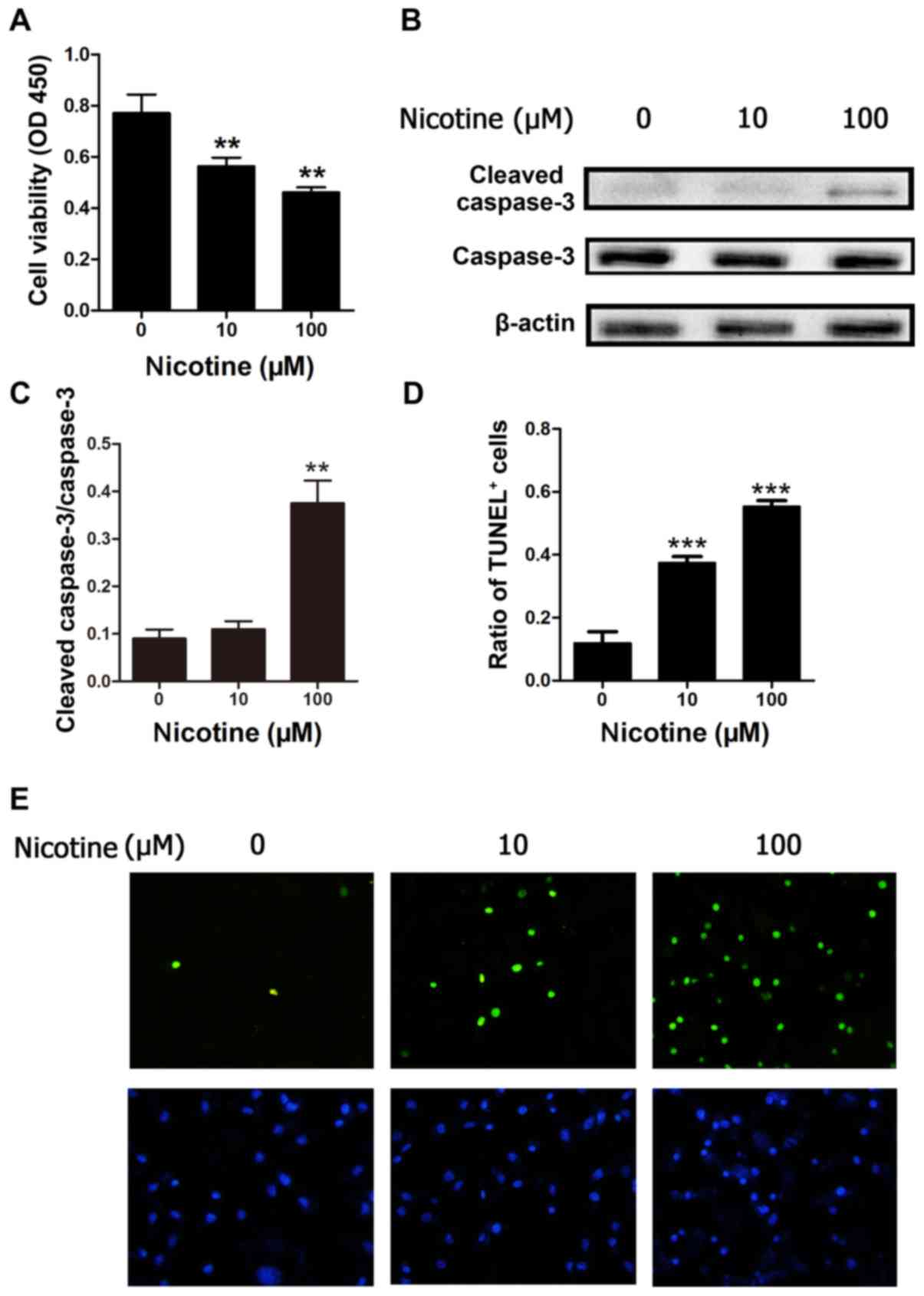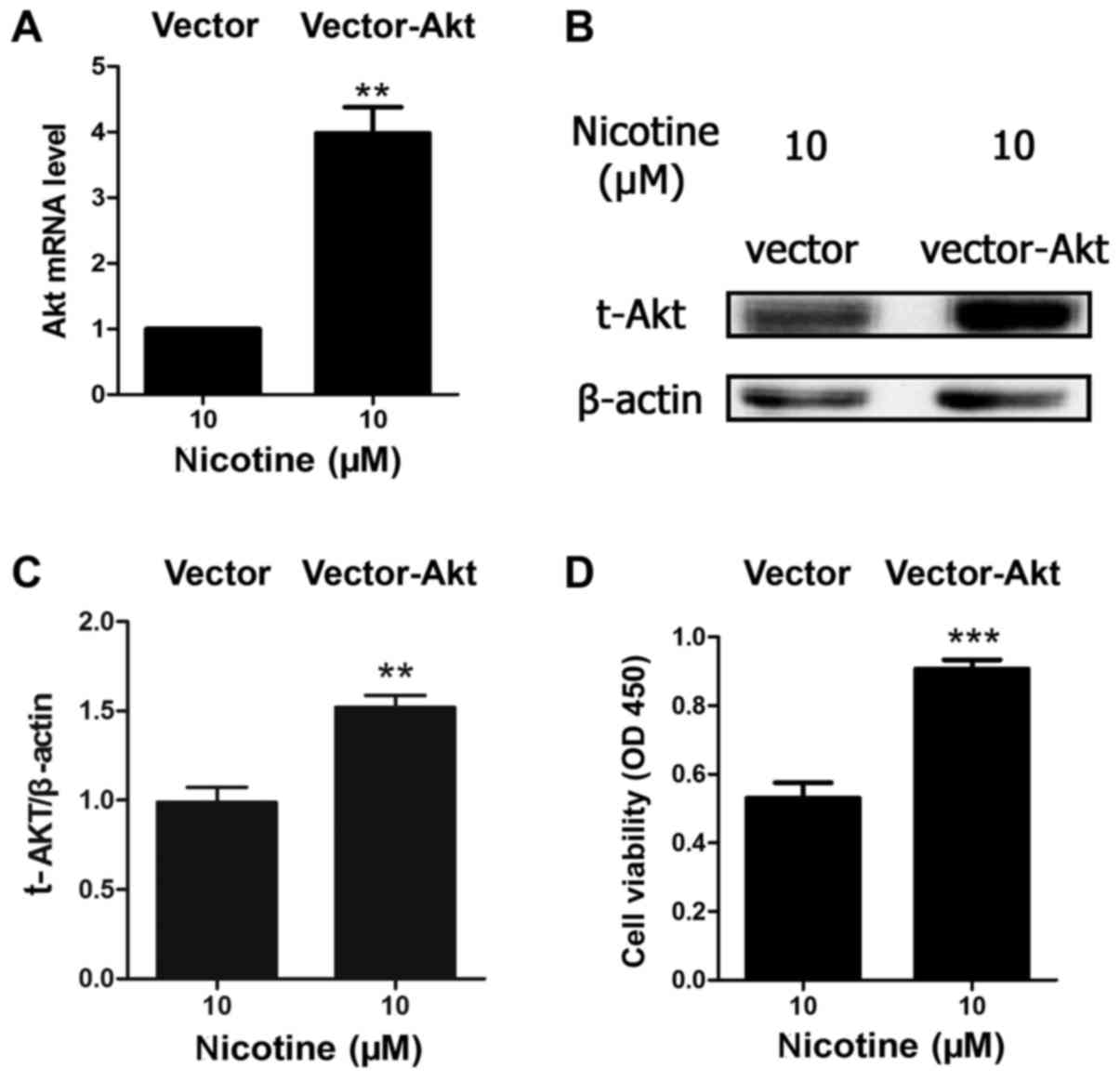|
1
|
Glickman MS and Schluger N: Adding insult
to injury: Exacer-bating TB risk with smoking. Cell Host Microbe.
19:432–433. 2016. View Article : Google Scholar : PubMed/NCBI
|
|
2
|
Purdue MP and Silverman DT: Clearing the
air: Summarizing the smoking-related relative risks of bladder and
kidney cancer. Eur Urol. 70:467–468. 2016. View Article : Google Scholar : PubMed/NCBI
|
|
3
|
Sharma R, Harlev A, Agarwal A and Esteves
SC: Cigarette smoking and semen quality: A new meta-analysis
examining the effect of the 2010 World Health Organization
laboratory methods for the examination of human semen. Eur Urol.
70:635–645. 2016. View Article : Google Scholar : PubMed/NCBI
|
|
4
|
Office of the Surgeon General (US); Office
on Smoking and Health (US), . The Health Consequences of Smoking: A
Report of the Surgeon General. Atlanta (GA): Centers for Disease
Control and Prevention (US); 2004
|
|
5
|
Singh S, Pillai S and Chellappan S:
Nicotinic acetylcholine receptor signaling in tumor growth and
metastasis. J Oncol. 2011:4567432011. View Article : Google Scholar : PubMed/NCBI
|
|
6
|
Lau JK, Brown KC, Thornhill BA, Crabtree
CM, Dom AM, Witte TR, Hardman WE, McNees CA, Stover CA, Carpenter
AB, et al: Inhibition of cholinergic signaling causes apoptosis in
human bronchioalveolar carcinoma. Cancer Res. 73:1328–1339. 2013.
View Article : Google Scholar : PubMed/NCBI
|
|
7
|
Wu YP, Kita K and Suzuki N: Involvement of
human heat shock protein 90 alpha in nicotine-induced apoptosis.
Int J Cancer. 100:37–42. 2002. View Article : Google Scholar : PubMed/NCBI
|
|
8
|
Zhou X, Sheng Y, Yang R and Kong X:
Nicotine promotes cardiomyocyte apoptosis via oxidative stress and
altered apoptosis-related gene expression. Cardiology. 115:243–250.
2010. View Article : Google Scholar : PubMed/NCBI
|
|
9
|
Franke TF: PI3K/Akt: Getting it right
matters. Oncogene. 27:6473–6488. 2008. View Article : Google Scholar : PubMed/NCBI
|
|
10
|
Manning BD and Cantley LC: AKT/PKB
signaling: Navigating downstream. Cell. 129:1261–1274. 2007.
View Article : Google Scholar : PubMed/NCBI
|
|
11
|
An R, Zhao L, Xi C, Li H, Shen G, Liu H,
Zhang S and Sun L: Melatonin attenuates sepsis-induced cardiac
dysfunction via a PI3K/Akt-dependent mechanism. Basic Res Cardiol.
111:82016. View Article : Google Scholar : PubMed/NCBI
|
|
12
|
Liao Y and Hung MC: Physiological
regulation of Akt activity and stability. Am J Transl Res. 2:19–42.
2010.PubMed/NCBI
|
|
13
|
Kim SY, Lee JH, Huh JW, Ro JY, Oh YM, Lee
SD, An S and Lee YS: Cigarette smoke induces Akt protein
degradation by the ubiquitin-proteasome system. J Biol Chem.
286:31932–31943. 2011. View Article : Google Scholar : PubMed/NCBI
|
|
14
|
Suizu F, Hiramuki Y, Okumura F, Matsuda M,
Okumura AJ, Hirata N, Narita M, Kohno T, Yokota J, Bohgaki M, et
al: The E3 ligase TTC3 facilitates ubiquitination and degradation
of phosphorylated Akt. Dev Cell. 17:800–810. 2009. View Article : Google Scholar : PubMed/NCBI
|
|
15
|
Bae S, Kim SY, Jung JH, Yoon Y, Cha HJ,
Lee H, Kim K, Kim J, An IS, Kim J, et al: Akt is negatively
regulated by the MULAN E3 ligase. Cell Res. 22:873–885. 2012.
View Article : Google Scholar : PubMed/NCBI
|
|
16
|
Livak KJ and Schmittgen TD: Analysis of
relative gene expression data using real-time quantitative PCR and
the 2(-Delta Delta C(T)) Method. Methods. 25:402–408. 2001.
View Article : Google Scholar : PubMed/NCBI
|
|
17
|
Yang Y, Kitagaki J, Dai RM, Tsai YC,
Lorick KL, Ludwig RL, Pierre SA, Jensen JP, Davydov IV, Oberoi P,
et al: Inhibitors of ubiquitin-activating enzyme (E1), a new class
of potential cancer therapeutics. Cancer Res. 67:9472–9481. 2007.
View Article : Google Scholar : PubMed/NCBI
|
|
18
|
Baber U, Mehran R, Giustino G, Cohen DJ,
Henry TD, Sartori S, Ariti C, Litherland C, Dangas G, Gibson CM, et
al: Coronary thrombosis and major bleeding after PCI with
drug-eluting stents: Risk scores from PARIS. J Am Coll Cardiol.
67:2224–2234. 2016. View Article : Google Scholar : PubMed/NCBI
|
|
19
|
Stone GW, Selker HP, Thiele H, Patel MR,
Udelson JE, Ohman EM, Maehara A, Eitel I, Granger CB, Jenkins PL,
et al: Relationship between infarct size and outcomes following
primary PCI: Patient-level analysis from 10 randomized trials. J Am
Coll Cardiol. 67:1674–1683. 2016. View Article : Google Scholar : PubMed/NCBI
|
|
20
|
Das A, Dey N, Ghosh A, Das S,
Chattopadhyay DJ and Chatterjee IB: Molecular and cellular
mechanisms of cigarette smoke-induced myocardial injury: Prevention
by vitamin C. PLoS One. 7:e441512012. View Article : Google Scholar : PubMed/NCBI
|
|
21
|
Sumanasekera WK, Tran DM, Sumanasekera TU,
Le N, Dao HT and Rokosh GD: Cigarette smoke adversely affects
functions and cell membrane integrity in c-kit+ cardiac
stem cells. Cell Biol Toxicol. 30:113–125. 2014. View Article : Google Scholar : PubMed/NCBI
|
|
22
|
Lee J and Cooke JP: Nicotine and
pathological angiogenesis. Life Sci. 91:1058–1064. 2012. View Article : Google Scholar : PubMed/NCBI
|
|
23
|
Marrs TC and Maynard RL: Neurotranmission
systems as targets for toxicants: A review. Cell Biol Toxicol.
29:381–396. 2013. View Article : Google Scholar : PubMed/NCBI
|
|
24
|
Li N, Si B, Ju JF, Zhu M, You F, Wang D,
Ren J, Ning YS, Zhang FQ, Dong K, et al: Nicotine induces
cardiomyocyte hypertrophy through TRPC3-mediated
Ca2+/NFAT signalling pathway. Can J Cardiol.
32:1260.e1–1260.e10. 2016. View Article : Google Scholar
|
|
25
|
Zhou BP, Liao Y, Xia W, Spohn B, Lee MH
and Hung MC: Cytoplasmic localization of p21Cip1/WAF1 by
Akt-induced phosphorylation in HER-2/neu-overexpressing cells. Nat
Cell Biol. 3:245–252. 2001. View Article : Google Scholar : PubMed/NCBI
|
|
26
|
Kim AH, Khursigara G, Sun X, Franke TF and
Chao MV: Akt phosphorylates and negatively regulates apoptosis
signal-regulating kinase 1. Mol Cell Biol. 21:893–901. 2001.
View Article : Google Scholar : PubMed/NCBI
|
|
27
|
Tobiume K, Matsuzawa A, Takahashi T,
Nishitoh H, Morita K, Takeda K, Minowa O, Miyazono K, Noda T and
Ichijo H: ASK1 is required for sustained activations of JNK/p38 MAP
kinases and apoptosis. EMBO Rep. 2:222–228. 2001. View Article : Google Scholar : PubMed/NCBI
|
|
28
|
Zhou BP, Liao Y, Xia W, Zou Y, Spohn B and
Hung MC: HER-2/neu induces p53 ubiquitination via Akt-mediated MDM2
phosphorylation. Nat Cell Biol. 3:973–982. 2001. View Article : Google Scholar : PubMed/NCBI
|
|
29
|
Stulpinas A, Imbrasaitė A and Kalvelytė
AV: Daunorubicin induces cell death via activation of apoptotic
signalling pathway and inactivation of survival pathway in
muscle-derived stem cells. Cell Biol Toxicol. 28:103–114. 2012.
View Article : Google Scholar : PubMed/NCBI
|
|
30
|
Kerr BA, West XZ, Kim YW, Zhao Y,
Tischenko M, Cull RM, Phares TW, Peng XD, Bernier-Latmani J,
Petrova TV, et al: Stability and function of adult vasculature is
sustained by Akt/Jagged1 signalling axis in endothelium. Nat
Commun. 7:109602016. View Article : Google Scholar : PubMed/NCBI
|
|
31
|
Fujio Y, Nguyen T, Wencker D, Kitsis RN
and Walsh K: Akt promotes survival of cardiomyocytes in vitro and
protects against ischemia-reperfusion injury in mouse heart.
Circulation. 101:660–667. 2000. View Article : Google Scholar : PubMed/NCBI
|
|
32
|
Kim SY, Kim HJ, Kang SU, Kim YE, Park JK,
Shin YS, Kim YS, Lee K and Kim CH: Non-thermal plasma induces AKT
degradation through turn-on the MUL1 E3 ligase in head and neck
cancer. Oncotarget. 6:33382–33396. 2015. View Article : Google Scholar : PubMed/NCBI
|
|
33
|
Dey-Guha I, Alves CP, Yeh AC, Salony, Sole
X, Darp R and Ramaswamy S: A mechanism for asymmetric cell division
resulting in proliferative asynchronicity. Mol Cancer Res.
13:223–230. 2015. View Article : Google Scholar : PubMed/NCBI
|
|
34
|
Toker A: TTC3 ubiquitination terminates
Akt-ivation. Dev Cell. 17:752–754. 2009. View Article : Google Scholar : PubMed/NCBI
|














